![[Aerial Photo of Big Ear]](../bigearhp.gif)
|
|
|
![[Aerial Photo of Big Ear]](../bigearhp.gif)
|
|
|
![[NAAPO Logo]](../NAAPOsm.jpg) Paul Wade's (W1GHZ) Webpage About the Big Ear The embedded webpage below is used with the permission of Paul Wade (W1GHZ). |
In 1997, the famed Big Ear,
This had been a Radiotelescope that
the OSU football team could be proud of.
Microwave
Update '97 was in Sandusky, Ohio.
"First light" for a telescope is a time for celebration.
Here is how the Big Ear looked in greener days:
Designed by Professor John Kraus, W8JK, this antenna configuration
is now referred to as a Kraus radiotelescope. The fixed parabolic
reflector, on the left, focuses the beam on the flat reflector on the right.
The flat reflector tilts to adjust the elevation (declination, if you
are an astronomer) of the beam. The azimuth is fixed and sweeps (in
right ascension) with the rotation of the earth, so one slice of sky is scanned
every 24 hours. The area between the reflectors is flat and covered
with aluminum plates to reduce noise from the warm earth.
Notice that the antenna is like my Periscope Antenna but lying flat, and much bigger.
See www.bigear.org for some history of the Big Ear, or the book Big Ear, by John Kraus, for details. Here is a picture of Professor John Kraus at the dedication of the historical marker in 1998
SETI League photos, used by permission Pictures at the wake of the Big Ear
Parabolic Reflector 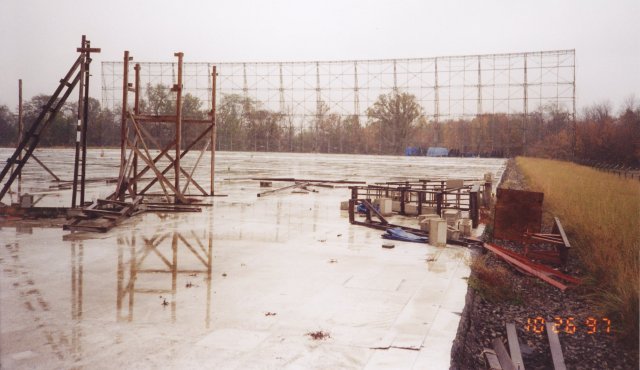 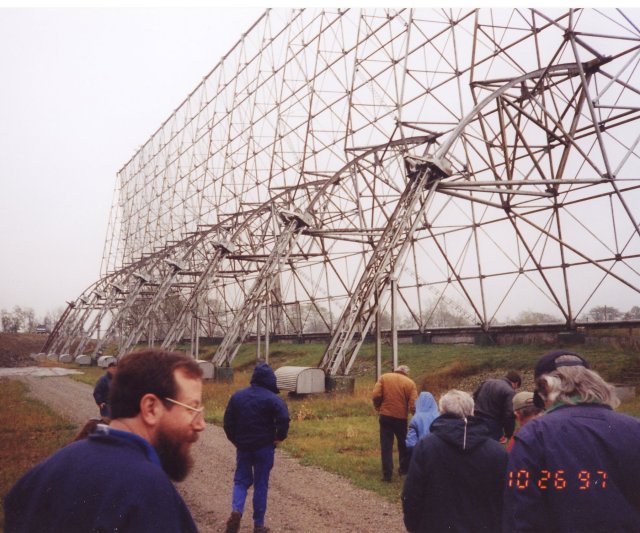 Flat plates between reflectors - the image of the reflector reflected in the plates makes the effective aperture twice as large 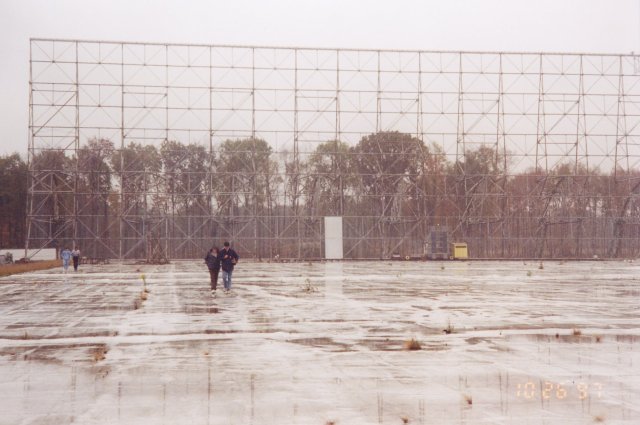 Feed horns - two feed horns to produce two beams separated
by a few seconds.
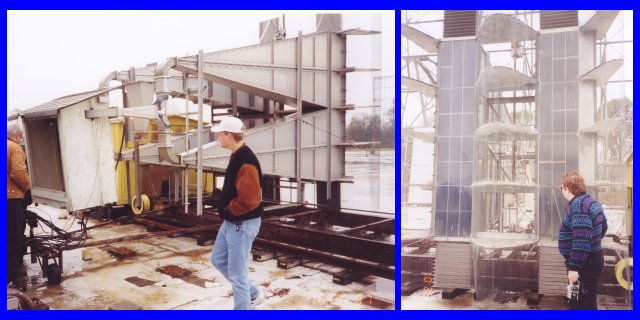 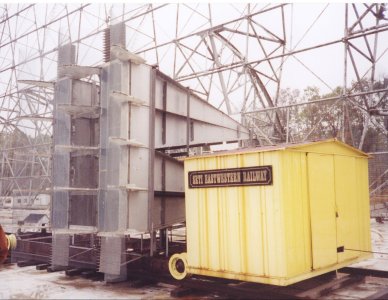
|
Copyright © 2004 Paul Wade (W1GHZ), Ohio State University Radio Observatory and North American
AstroPhysical Observatory (NAAPO).
Designed by Jerry Ehman.
Last modified: August 11, 2004.